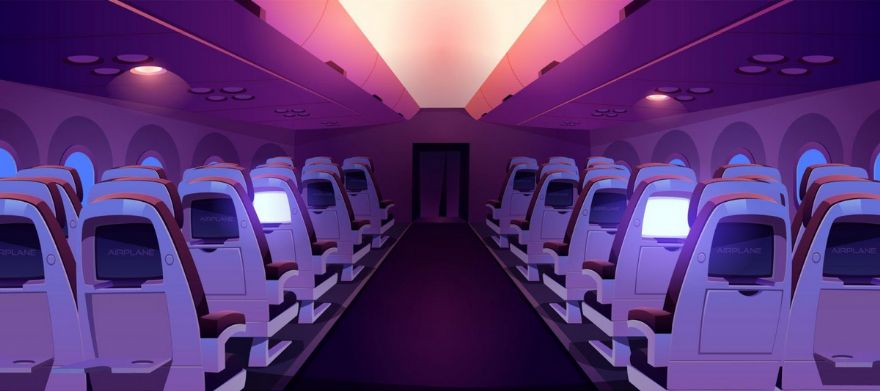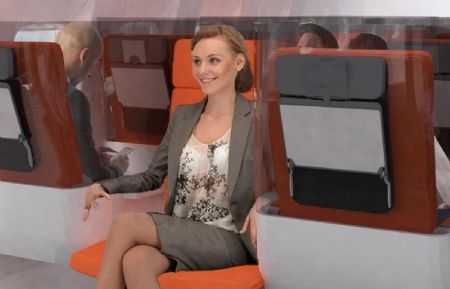
Air travel, which all but ceased as the world grappled with the Covid-19 pandemic, is now looking to take off again with airlines introducing safety measures to ensure passengers once again feel confident to fly.
However, the pandemic has proved to be a force for change, and has given the airline industry a chance to review policy, customer service, safety, upgrade
their avionics equipment and emerge renewed and ready for a global restart.
Wearing face masks, using hand sanitisers, and social distancing will now be the norms of the post-pandemic world and to this end airlines have dedicated much of their time and resources to ensure travellers feel safe on board their aircraft.
Aircraft designers have been busy during the past year finding ways to create new seating systems to enhance social distancing between passengers — one thing is certain, existing aircraft interiors layouts will not be practical in the future.
New seating conceptsRegardless of whether passengers are wearing face masks and regularly sanitising their hands, they will no longer want to sit elbow-to-elbow in cramped spaces. While some airlines are blocking middle seats to create distance between passengers, this is not a financially viable solution in the longer term — so new seating concepts have to be developed.
One stand-out design is the ‘Janus’ seat which is named after the
Roman god with two faces, this ‘S-form’ seating arrangement has two forward-facing seats at the window and aisle positions with the middle seat facing the aircraft’s rear, ensuring minimal contact between passengers. A transparent guard shield is also attached to each seat’s upper section, forming a barrier on both sides of the passenger and above their heads.

The protective shield will isolate passengers from each other even when walking along the aircraft’s aisle and the guard will store the tray-table, information pocket and other equipment while still enabling the seat to recline.
Another design is the ‘Glassafe’ seat, which is a cocoon-like structure that can be attached to the top of an existing seat to create a transparent, protective barrier between seats. It would minimise physical contact between passengers while restricting airflow between seats, reducing the risk of Covid-19 transmission. It is easy to install and can be removed quickly between flights to be sanitised. Both the Janus and the Glassafe shields are manufactured from materials that are easy to disinfect.
Moving away from three deep rows of seats found in air travel today, designers have introduced the perfect social distancing solution for aircraft. Like a double-decker bus, pods or cabins will accommodate individuals, couples and families in a stacked form. Meanwhile, ‘lie-flat’ cabins proposed for the premium economy traveller will transform the interior of an aircraft promoting comfort and social distancing. Every passenger would be able to lie flat or sit upright with their legs outstretched in individual pods. This design has already been adopted for long-haul travel by some airlines.
Cabin sanitation has also taken centre stage in a bid to allay passenger fears. Airlines which are keen to restore confidence in air travel can, by using hospital-grade technology, clean their cabins in less than 10min. A machine the size of a beverage trolley with arms extended over the tops of the seats is sent down the aisle, exposing every surface to the ultraviolet rays. Ultraviolet light effectively reduces bacteria and viruses.
Seat covers with self-cleaning propertiesInstead of reconfiguring seating plans, airlines are also looking at the fabric used to upholster seats. Hygienic and sustainable seat covers with self-cleaning properties are being developed. An antiviral chemical, which can break down viruses within 2hr, can be permanently interwoven into the fabric during the manufacturing process.
Another breakthrough in fabric technology sees seat fabrics being manufactured using photochromic and thermochromic inks. Exposure to ultraviolet or heat changes the colour of the fabric, and a message of reassurance appears for the boarding passenger. Once used, the seat changes colour again.
While this is reassuring, another option is to remove fabric from aircraft altogether. Viruses nest in the stitching of materials and by replacing fabric with seam-free plastic or leather results in more straightforward cleaning of surfaces and improved onboard hygiene.

By redesigning the seatback pockets, cleaning operatives will be able to eliminate dirt traps. The seat recline button will be enclosed in the seat covering to avoid becoming contaminated. Not only that, the tray tables can be removable to enable sanitising after each meal.
It is also expected that aircraft toilets will be fitted with hands-free devices to protect passengers. These include electric and foot-controlled flushing switches, infra-red, sensor-based waste bin lids and refillable hand sanitiser dispensers.
In-flight entertainmentUnsurprisingly passengers are increasingly wary of touching surfaces. Many airlines are considering remove seat-back touch-screen entertainment systems to focus on adapting
their inflight entertainment to offer a contactless experience by encouraging a BYOD (bring your own device) model.
There will be docking stations located on the back of each seat. Airlines are currently looking at ways passengers can stream content directly to their smartphone, laptop or tablet before they board their flights.
As a result of Covid-19, some airlines have stopped in-flight catering completely, while others have introduced pre-flight online food orders and delivery. Passengers are able to pre-order and pay for their meals up to an hour before their flight. The meals are freshly prepared and delivered directly to the aircraft.
The crew then serves the meals directly to the passengers from collapsible carts that replace the traditional trolleys. Once meals have been distributed, these space-saving carts are folded away — the system has been devised to minimise contact between passengers and crew.